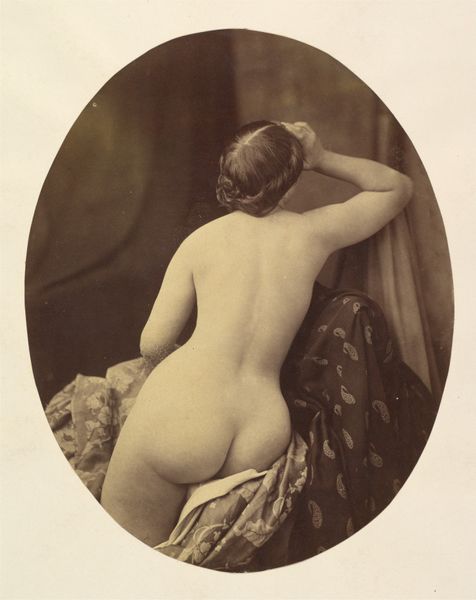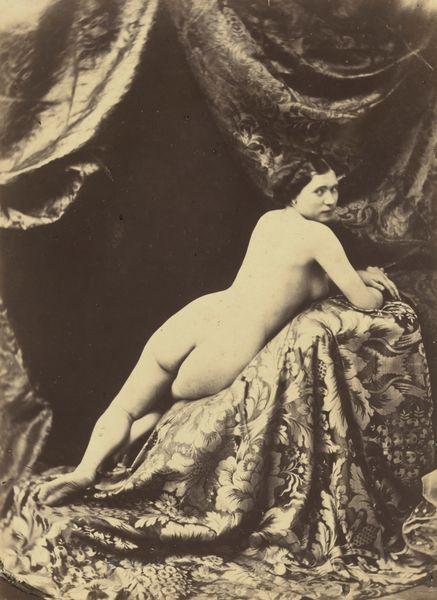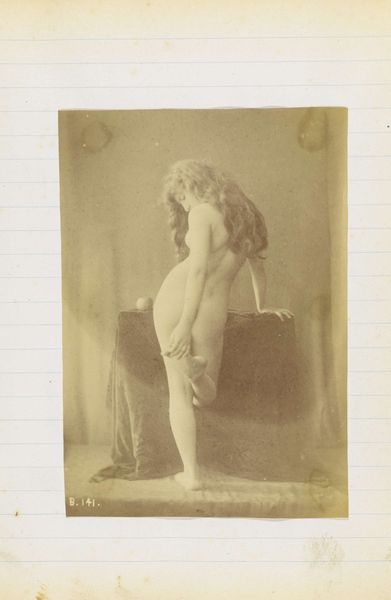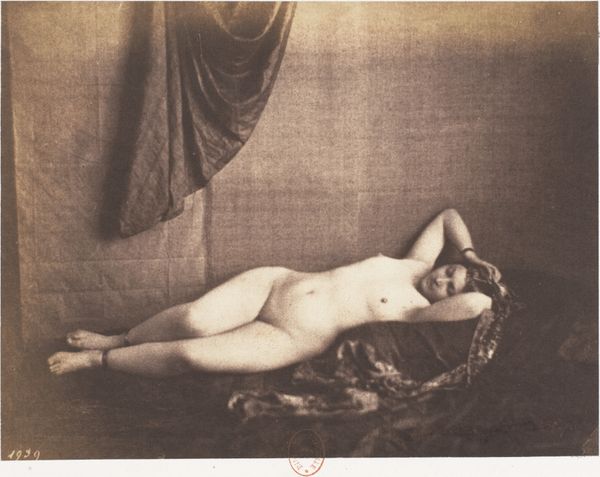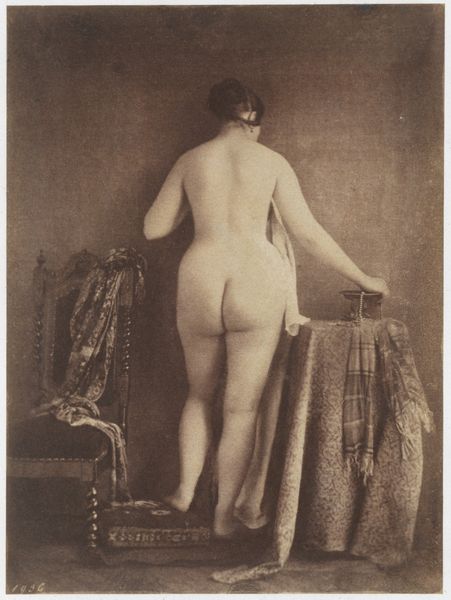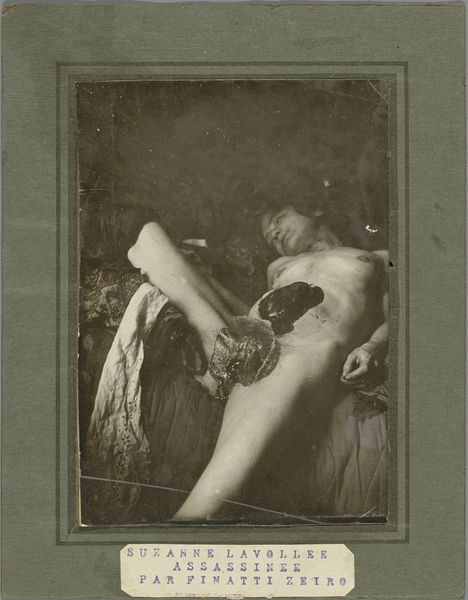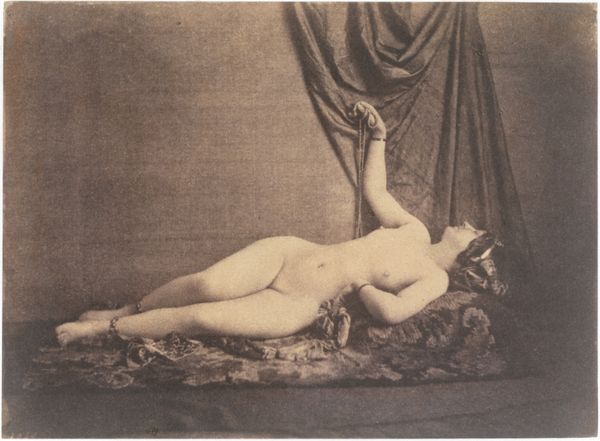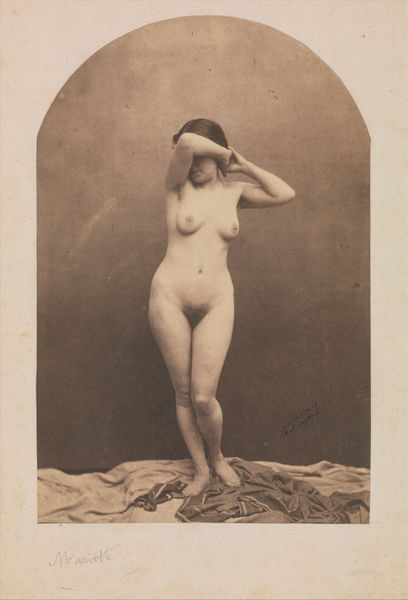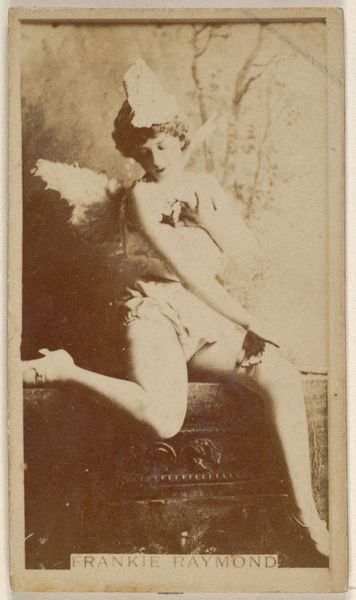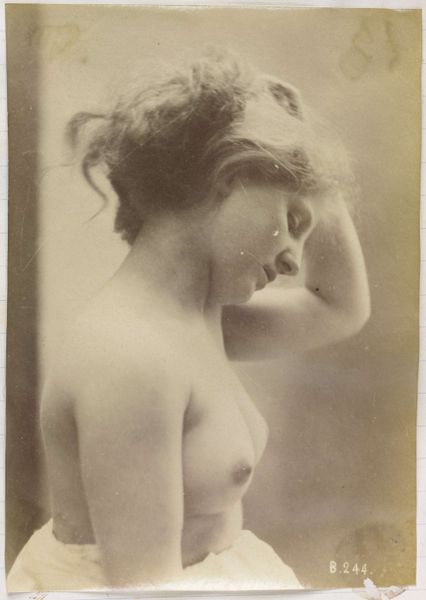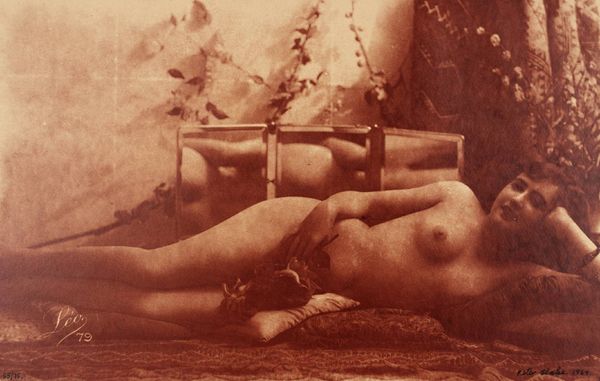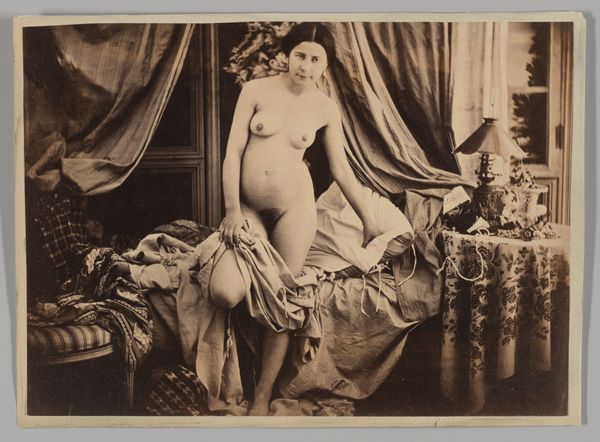![[Nude Before a Mirror] by Bruno Braquehais](/_next/image?url=https%3A%2F%2Fd2w8kbdekdi1gv.cloudfront.net%2FeyJidWNrZXQiOiAiYXJ0ZXJhLWltYWdlcy1idWNrZXQiLCAia2V5IjogImFydHdvcmtzL2IzM2QyOTgxLTI0YWMtNDYxMS05OWUzLTVkNjA4MTNmMmRjYy9iMzNkMjk4MS0yNGFjLTQ2MTEtOTllMy01ZDYwODEzZjJkY2NfZnVsbC5qcGciLCAiZWRpdHMiOiB7InJlc2l6ZSI6IHsid2lkdGgiOiAxOTIwLCAiaGVpZ2h0IjogMTkyMCwgImZpdCI6ICJpbnNpZGUifX19&w=3840&q=75)
Dimensions: Image: 22.3 × 17.9 cm (8 3/4 × 7 1/16 in.) Mount: 50.1 × 39.3 cm (19 3/4 × 15 1/2 in.)
Copyright: Public Domain
Editor: Here we have Bruno Braquehais's *Nude Before a Mirror*, a gelatin-silver print from the late 1850s. The woman’s partially draped, gazing at herself. The image feels surprisingly intimate, despite its age. What strikes you when you look at it? Curator: This image really highlights the shifting and often contradictory social role of early photography, especially regarding depictions of the female nude. In mid-19th century France, anxieties around morality and the rise of industrial capitalism profoundly influenced artistic production. How do you think the emergence of photography as a readily reproducible medium complicated the perception and control of such images? Editor: I guess photography made these images more widely accessible, democratizing the gaze but also maybe cheapening the subject? Was it controversial at the time? Curator: Absolutely. On one hand, the photographic nude participated in a longer tradition of academic painting, referencing classical ideals of beauty, potentially justifying the image within established art historical narratives and patriarchal structures. Simultaneously, photographs were distributed through commercial networks. It becomes both an object of high art and popular consumption. Does that make you rethink that initial sense of intimacy? Editor: I suppose, yes. Knowing its circulation changes how I see her gaze – is she looking at herself or us? It's like she's aware she’s being viewed, which adds another layer. Curator: Precisely. And the inclusion of the mirror implicates us in that act of viewing. Editor: So, this photograph challenges easy categorization; high art versus something more controversial? Curator: Indeed, and by doing so reveals the tensions inherent in art's relationship with society, economics, and the enduring power dynamics of the gaze itself. Editor: Thanks. I hadn’t considered that such an early photograph could be so nuanced in how it reflected the social complexities of the time.
Comments
No comments
Be the first to comment and join the conversation on the ultimate creative platform.
